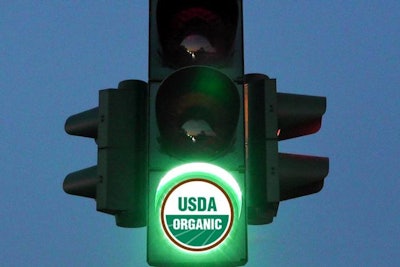

The organic food industry is a growing market with many opportunities for agricultural producers — growth in U.S. organic sales has averaged 10 percent annually over the last five years, according to data presented by the National Sustainable Agriculture Coalition (NSAC) and the National Organic Coalition (NOC). Adopting organic conservation practices can help producers, processors and handlers access new customers and markets as well as comply with regulatory policy. However, making the transition to organic production takes both time and planning.
The U.S. Department of Agriculture (USDA) was present at the 2016 Midwest Organics and Sustainable Education Service (MOSES) Organic Farming Conference to answer any questions for producers looking to transition to organic production or set up a split operation.
Making the transition to organic production
Before producers can use land to raise organic products, they must ensure that no prohibited fertilizer or pesticides have been applied to the land during a three-year transition period. After completing the transition, producers can submit an application. The application requires a detailed description of the operation to be certified; a history of substances applied to the land during the previous three years; the names of the organic products to be grown, raised or processed on the land; and a written Organic System Plan (OSP) describing the practices and substances to be used.
An USDA-accredited certifier will review the application to verify that the operation’s practices comply with USDA organic regulations. An inspector then conducts an on-site inspection of the operation, presenting a report to the certifying agent. If the written application and the on-site inspection show that all practices comply with USDA organic regulations, the certifying agent issues an organic certificate to the operation. Initial certification can take three to six months, and the certification must be renewed each year.
Once certified, organic producers and processors can label their products as organic as long as they continue to follow organic regulations.
















